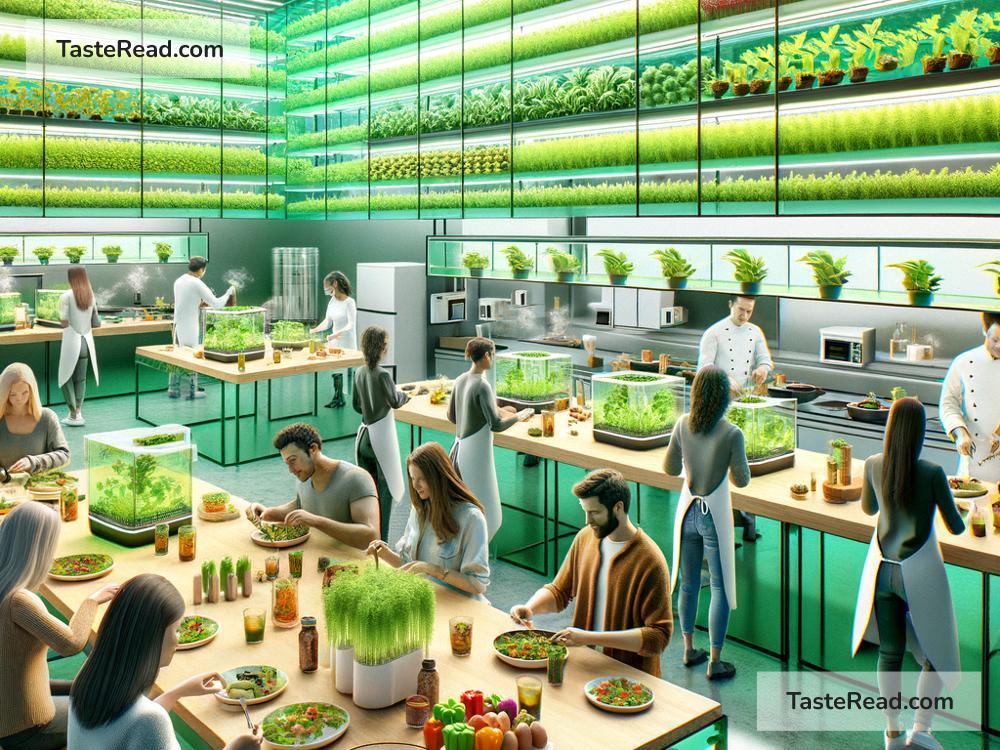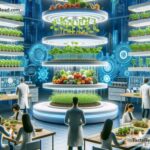The Future of Food: Building a Better Food System Together
Food is something we all share. It brings people together, fuels our bodies, and connects us to the planet. But the way food is grown, made, and distributed today has some big problems. From climate change to hunger, from food waste to unhealthy diets, the current food system needs fixing. The future of food depends on all of us working together to create a system that is sustainable, fair, and resilient.
This blog explores the future of food and how collaborative systemic change can help us address these challenges — in simple terms that everyone can understand.
What’s the Problem with Food Today?
Our food system is huge. It includes farmers, companies, grocery stores, markets, chefs, and consumers. It even stretches to the factories that process food and the transportation systems that ship products across countries and continents. While this system works for many people, it has big problems.
-
Climate Change and Environmental Damage: Farming takes a toll on the planet. For example, clearing land for agriculture leads to deforestation, which harms ecosystems. Livestock farming produces greenhouse gases like methane, contributing to global warming. Plus, overusing chemicals like fertilizers and pesticides can pollute soil and water.
-
Hunger and Inequality: Even though the world produces enough food to feed everyone, millions of people still go hungry. Some communities don’t have access to affordable or healthy food, while others waste large amounts of food. This inequality is unfair and unnecessary.
-
Health Issues: Many of the foods we eat are highly processed and filled with sugar, salt, or unhealthy fats. These foods can lead to health problems like obesity, diabetes, and heart diseases. Meanwhile, fresh and nutritious food can be difficult to afford for many people.
-
Food Waste: About one-third of all food produced globally is wasted. This waste happens at every stage—on farms, in manufacturing, in grocery stores, and in households. It’s not just a waste of food; it’s a waste of resources like water, energy, and labor.
What Could the Future of Food Look Like?
Imagine a food system that respects both people and the planet. In the future, food could be grown more sustainably, shared more fairly, and eaten more mindfully. Here are some ideas for what this better future could look like:
-
Climate-Friendly Farming: Farmers could use techniques that help the planet, like planting crops that need less water or growing food in ways that protect the soil. Vertical farms, where food is grown indoors in stacks, could reduce land use. New technologies like precision agriculture might help farmers use fewer resources while growing better crops.
-
Alternative Proteins: Meat farming uses a lot of land and water, and it produces emissions. In the future, more people might eat plant-based proteins or lab-grown meat to reduce environmental damage.
-
Equitable Access to Food: Imagine a world where everyone, from rural villages to big cities, has access to affordable and healthy food. Community gardens and urban farms could make fresh food available to more people. Governments and organizations could work to ensure no one has to go hungry.
-
Smart Kitchens to Reduce Waste: Technology, like apps that track expiration dates or smart refrigerators that suggest recipes based on what’s inside, could help families waste less food.
-
Healthier Choices: Future food products might be designed to meet nutritional needs without harmful additives. Schools and workplaces could encourage healthier eating habits. Food labeling could be clearer to help everyone make informed choices.
Why Collaboration Is Key
Fixing the food system isn’t something one group or organization can do alone. It requires collaborative systemic change—which means bringing together everyone involved in the food system to work toward shared solutions.
Here’s how collaboration can play a big role:
-
Farmers and Scientists: Farmers and scientists can team up to develop more sustainable farming methods. For example, scientists can research ways to improve soil health while farmers test these methods in the real world.
-
Governments and Businesses: Governments can create laws that support sustainable practices and reduce waste. Meanwhile, businesses can invest in eco-friendly food production and packaging.
-
Communities and Organizations: Community groups can grow local food, help distribute it to those in need, and educate people about healthy eating. Nonprofit organizations can advocate for policies that make food systems fairer.
-
Consumers and Producers: We, as consumers, can make mindful choices about what we buy and eat. Supporting sustainable brands and reducing personal food waste both make a difference.
Small Actions, Big Impact
You might be wondering how you can help, especially if the food system feels too large and complex to change. The truth is, small actions add up!
- Support local farmers by buying food from farmers’ markets.
- Eat more plant-based meals to reduce environmental impact.
- Learn how to store food properly to avoid waste.
- Share meals or donate to food banks if you have extra food.
- Talk to friends or family about food challenges and solutions.
When many people take small steps, big things start to change.
A Shared Responsibility
The future of food doesn’t just belong to governments, scientists, or businesses. It belongs to all of us—parents, students, farmers, chefs, and everyday people who sit down to eat three meals a day.
Collaborative systemic change is powerful because it reminds us of one simple truth: we’re all connected. Food is something we rely on every single day. By working together, we can make sure that future generations enjoy a food system that is kind to people and the planet.
Your plate has power. Together, we can build a better future for food. Let’s start today.

